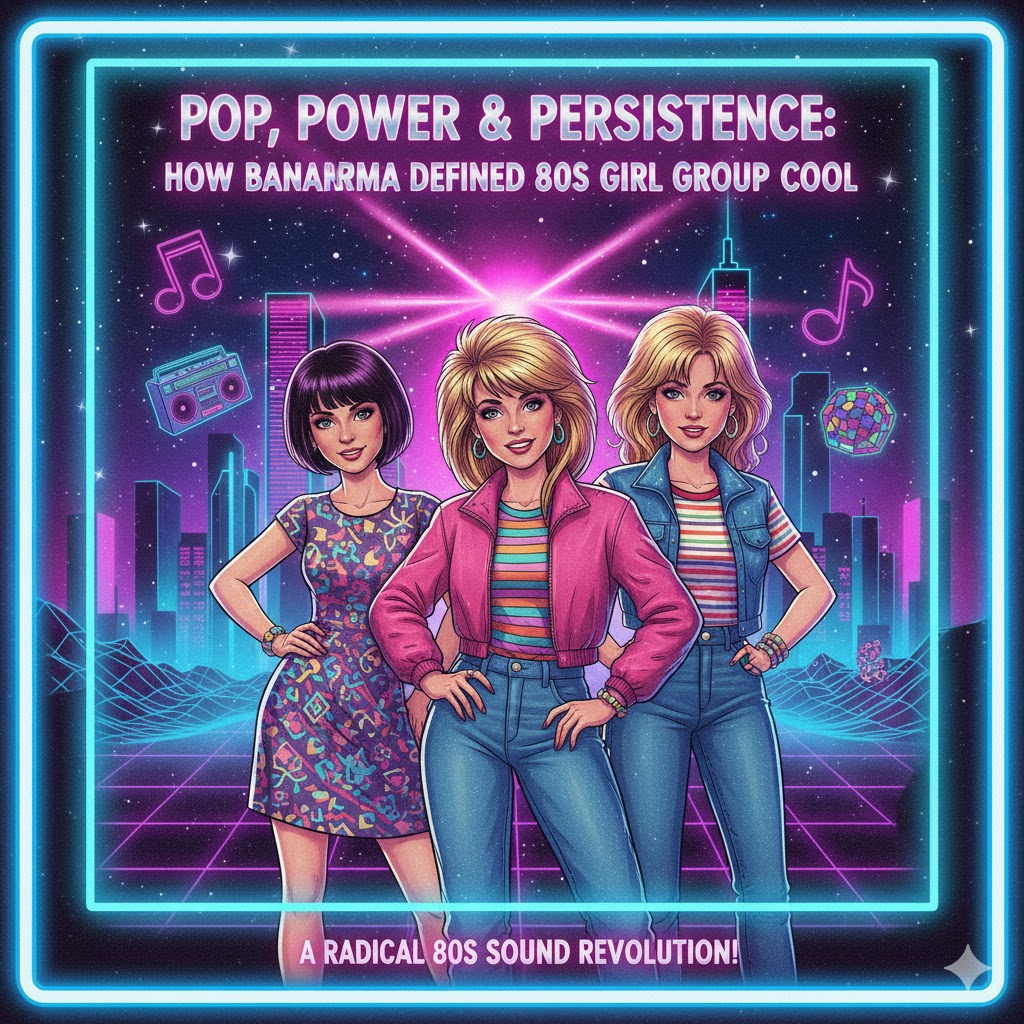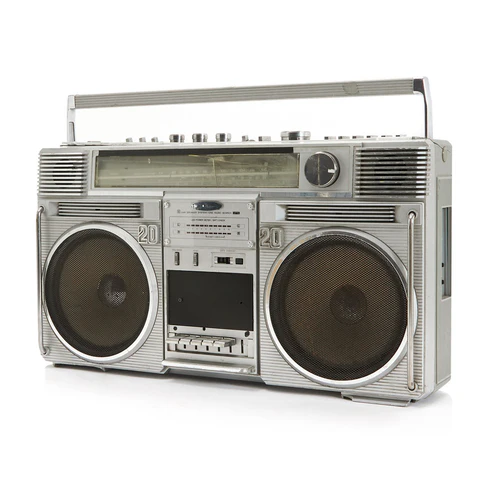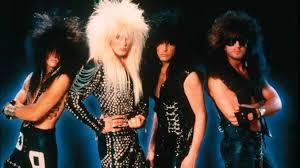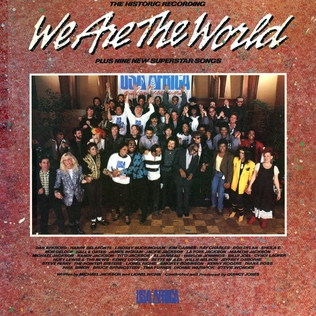 The 1980s were a decade of bold fashion, infectious music, and a revolution in pop culture. Amid the rise of synth-driven sounds and the explosion of MTV, Bananarama emerged as one of the era’s most distinctive and influential acts. The British girl group, originally consisting of Sara Dallin, Siobhan Fahey, and Keren Woodward, not only dominated charts with their catchy tunes but also redefined the role of women in pop music, becoming icons of style, empowerment, and accessibility. Bananarama’s influence extended beyond their music, shaping fashion, media representation, and the very notion of girl groups in the 1980s.
The 1980s were a decade of bold fashion, infectious music, and a revolution in pop culture. Amid the rise of synth-driven sounds and the explosion of MTV, Bananarama emerged as one of the era’s most distinctive and influential acts. The British girl group, originally consisting of Sara Dallin, Siobhan Fahey, and Keren Woodward, not only dominated charts with their catchy tunes but also redefined the role of women in pop music, becoming icons of style, empowerment, and accessibility. Bananarama’s influence extended beyond their music, shaping fashion, media representation, and the very notion of girl groups in the 1980s.
Bananarama’s appeal was rooted in their ability to combine infectious pop melodies with an image that was relatable yet aspirational. Unlike many female acts of the time, whose personas often leaned toward glamorized sophistication, Bananarama embraced an approachable, fun-loving aesthetic. Their style—oversized sweaters, denim jackets, scrunchies, and bold accessories—spoke to teenagers and young women, signaling that pop stardom could be fun, colorful, and self-expressive rather than intimidating. This sartorial influence resonated deeply with fans, shaping the casual yet trendy fashion sensibility that characterized 1980s youth culture.
Musically, Bananarama captured the sound of the decade with a mix of upbeat pop, new wave, and danceable rhythms. Hits like “Cruel Summer,” “Venus,” and “Robert De Niro’s Waiting” showcased their knack for combining catchy hooks, harmonized vocals, and synth-driven instrumentation. Their music was radio-friendly yet sophisticated, blending elements of European new wave with accessible pop sensibilities. This combination made Bananarama a staple on both the airwaves and MTV, where their vibrant music videos further amplified their cultural presence.
The group’s success on MTV was particularly significant. The early 1980s marked the rise of music videos as a dominant cultural medium, and Bananarama’s colorful, playful, and visually striking videos captured the channel’s youthful energy. Whether performing in bright, choreographed ensembles or embracing narrative-driven, tongue-in-cheek storylines, Bananarama understood how to translate their music into a visual language that resonated with a generation glued to television screens. Videos like “Venus,” with its bold graphics and dynamic choreography, became cultural touchstones, reflecting the synergy between pop music and visual storytelling that defined the decade.
Bananarama also played a critical role in challenging gender norms within the music industry. At a time when girl groups were often marketed primarily for their looks rather than their artistic input, Bananarama asserted themselves as creative participants in their music. They were involved in songwriting, contributed to the selection of tracks, and projected an image that balanced style with substance. This authenticity set them apart from contemporaries, offering a model for female empowerment in a male-dominated pop landscape. Their influence paved the way for future generations of girl groups and female pop artists who sought to be taken seriously as musicians while maintaining a fun, engaging public persona.
The group’s impact extended into fashion and youth identity, with fans emulating their eclectic, streetwise style. Bananarama’s wardrobe choices combined urban casual with whimsical accessories, creating a template for 1980s teen fashion that was both attainable and aspirational. Oversized jackets, leggings, neon-colored belts, and graphic tees became hallmarks of the Bananarama aesthetic, influencing not only fans but also fashion editors, stylists, and retail trends. Their embrace of playful, expressive clothing made fashion feel fun, inclusive, and tied to the energy of pop music rather than formalized style hierarchies.
Collaboration was another hallmark of Bananarama’s influence. Working with producers like Stock Aitken Waterman, they helped define the “Hit Factory” sound of the 1980s, a glossy, high-energy style that dominated the UK charts and crossed over to the United States. This partnership produced a series of chart-topping hits, blending catchy hooks, danceable beats, and polished production. The accessibility of their music, combined with its unmistakable energy, helped Bananarama reach diverse audiences, including teenagers, club-goers, and radio listeners, solidifying their role as pop culture icons of the decade.
Bananarama’s crossover appeal between the UK and US markets was particularly notable. “Cruel Summer” became an anthem in the United States, bolstered by its inclusion in the film The Karate Kid and heavy rotation on MTV. Their ability to appeal internationally demonstrated the globalization of pop culture during the 1980s and highlighted the role of media in spreading British pop sensibilities across the Atlantic. Bananarama’s music captured a cosmopolitan spirit, bridging urban youth culture in London with American teens’ fascination with vibrant, catchy pop.
The group’s image and music also intersected with broader 1980s pop culture trends, from the rise of aerobics and dance culture to the visual aesthetics of neon and bold patterns. Their music videos often included choreographed movements, dynamic urban settings, and playful narrative elements, aligning with the energetic, visually driven culture of the decade. Bananarama’s songs became synonymous with summer, friendship, and youthful exuberance, reflecting the social dynamics of teenagers who sought joy, independence, and identity through music and fashion.
Bananarama also influenced the marketing of pop music in the 1980s. Their success demonstrated the power of a cohesive brand—music, style, and public persona all working in harmony. Record labels and media outlets recognized the importance of cultivating an image that resonated with fans beyond the music itself. This approach shaped marketing strategies for other artists, emphasizing the symbiotic relationship between visual identity, media presence, and chart success. Bananarama’s savvy blending of music and image set a standard for how pop acts could thrive culturally and commercially.
The group’s songs often carried themes of empowerment, independence, and resilience, subtly influencing youth attitudes and social norms. Tracks like “Shy Boy” and “Robert De Niro’s Waiting” portrayed young women navigating relationships and asserting agency, reflecting broader conversations about gender and autonomy in the 1980s. Through their lyrics, performances, and public personas, Bananarama offered role models for a generation of girls seeking fun, confidence, and self-expression within a rapidly changing cultural landscape.
Merchandising and media exposure reinforced Bananarama’s visibility and cultural impact. Posters, magazine covers, and promotional appearances allowed fans to feel connected to the group, while music videos provided a constant visual reminder of their playful, approachable aesthetic. The trio’s media presence made them cultural icons beyond the charts, representing a lifestyle and attitude that resonated with fans and reflected the optimism, energy, and creativity of the decade.
Bananarama’s longevity and influence extend beyond the 1980s. Their hits continue to appear in nostalgic compilations, films, and commercials, underscoring their enduring appeal. Cover versions of their songs, modern remixes, and continued fan appreciation highlight how their music captured timeless aspects of pop culture while remaining emblematic of a specific decade. Their impact on female representation in pop music, music video aesthetics, and teen fashion continues to be recognized in retrospectives, confirming their status as foundational figures in 1980s culture.
The trio’s influence also lies in their relatability. Unlike highly manufactured acts, Bananarama projected a sense of authenticity and camaraderie that resonated with fans. Their public interactions, interviews, and media appearances emphasized friendship, humor, and creativity, allowing audiences to connect with the personalities behind the music. This relatability strengthened fan loyalty and helped establish Bananarama not just as performers, but as cultural icons who represented the spirit of youthful fun, creativity, and independence.
Bananarama’s role in shaping 1980s pop culture is also evident in how they bridged the gap between music and visual media. MTV transformed the way audiences engaged with music, making image as important as sound. Bananarama thrived in this environment, leveraging their visual style, energetic performances, and narrative-driven videos to create a multi-sensory cultural presence. The synergy of music, fashion, and media exemplified the decade’s pop culture ethos, where successful artists needed to engage audiences across multiple platforms.
Their playful, approachable aesthetic also challenged the notion of the glamorous, untouchable pop star. Fans saw themselves reflected in Bananarama’s style, humor, and attitude, creating a sense of connection and inclusion. This accessibility was revolutionary in its own way, demonstrating that pop success could coexist with authenticity and relatability. It influenced future girl groups, from the Spice Girls to modern pop acts, showing that personality and approachability could be just as compelling as polished production.
Ultimately, Bananarama’s significance in 1980s pop culture lies in their ability to define an era of music, fashion, and youth identity. Their infectious pop songs, innovative music videos, and relatable public personas created a blueprint for girl groups, female empowerment, and visual media integration in popular music. They embodied the energy, creativity, and optimism of the decade, influencing how music was made, marketed, and consumed, and leaving a lasting legacy that continues to resonate with fans of all ages.
For those who grew up in the 1980s, Bananarama represents more than catchy hits or memorable videos—it is a cultural touchstone. Their music evokes memories of summer days, school dances, and MTV marathons, while their style and attitude reflect a generation’s desire for fun, self-expression, and connection. Bananarama showed that pop music could be bold, playful, and empowering, redefining what it meant to be a girl group in an era dominated by synths, neon, and television.
Bananarama’s influence persists because they captured the essence of 1980s youth culture: energetic, stylish, fun, and unapologetically confident. Their music, fashion, and media presence left an indelible mark on pop culture, inspiring both fans and future musicians. Through catchy melodies, colorful style, and relatable personas, Bananarama shaped the sound and spirit of the decade, proving that music could be both commercially successful and culturally transformative.
The legacy of Bananarama endures as a reminder that the most influential acts are those that connect with audiences on multiple levels: through music, visual style, attitude, and authenticity. They were more than a pop group—they were an emblem of 1980s girl power, creativity, and cultural energy. For a generation coming of age amidst neon lights, synthesizers, and MTV, Bananarama provided the soundtrack, style, and spirit of the decade, securing their place as icons of 1980s pop culture.



